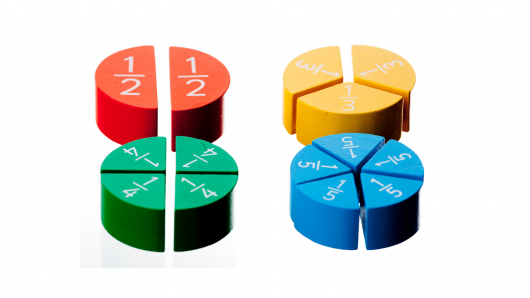Fractional conversions are the result of certain attribution models, which are put in place to ensure that you get a clearer picture of the customer’s journey to a conversion. If you don’t see fractional conversions in your Google Ads reports, you’re probably making pay-per-click (PPC) advertising decisions based on incomplete data.
Let’s say you sell hats. In the last week, Google Ads reports that you sold 4.33 hats. Did you really sell one-third of a hat? No, that’s fractional conversions at work in Google Ads telling you that more than one of your PPC ads contributed to selling your hats.
In order to understand how this happens, you first need to understand that a customer’s path to a conversion frequently involves multiple clicks occurring over a period of time. Not everyone is going to search for your product, click through to your website, and then convert on the spot — although that would be awesome. A single conversion can often take two, three, four, or more clicks on an ad (or other touchpoints) before leading to an actual conversion.
Google Ads, and other analytics software similar to Google ads, use attribution models to determine which channel should get credit for each conversion. Some attribution models credit the first or last click in the journey with the entire conversion, ignoring every other click along that visitor’s path. Other attribution models credit a portion of a conversion to each click along the journey, which is why you may end up with fractional conversions because of multiple ad clicks.
There are currently six attribution models to choose from in Google Ads. Some will report conversions as fractions, and others will not.
The default attribution model is the “Last-click” model. Conversions will not be fractional under last-click because all credit will go to the last click that occurred prior to the conversion. The other model that will not report fractionally is “First-click,” which is the exact opposite of last-click in that it credits the first ad clicked on with the whole conversion.
If you are a visual learner, the included charts might help you understand how each attribution model works differently, and why some report as fractions while others do not. In each example, we used a scenario where a searcher clicked on four different ads before converting.
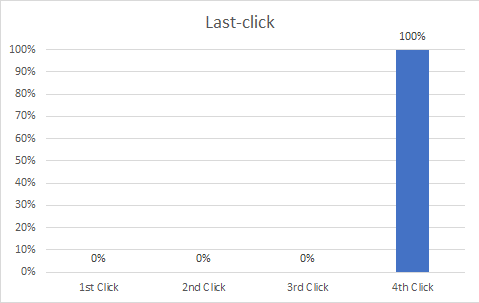
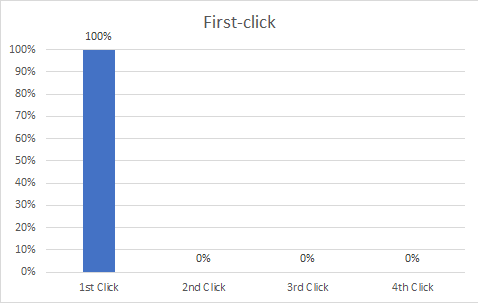
The non-fractional attribution models — last-click and first-click — shown above can be damaging to the way you view your performance. In these examples, the three other ad clicks that helped lead to the conversion get no credit at all.
Imagine if the Olympics only awarded the runner in the last (or first) leg of a relay race with a medal and a spot at the podium. Similarly, rewarding all of the credit to a single ad leads you to make decisions about the efficacy of that ad that may not be accurate.
The first ad clicked on could get all the credit, but never lead to a conversion without the help of other ads. Conversely, using a fractional attribution model ensures that you don’t end up discrediting the importance of all those other clicks along the way.
Under first-click and last-click, you might end up pausing ads for keywords that were vital to leading to a conversion, but never contributed to a conversion via first or last click.
For that reason, there are four different fractional attribution models that split credit between contributing ads in different ways.
The most common fractional attribution method used today is “Position-based.” Under this method, 40% of the credit will go to both the first click and last click, and the remaining 20% will be split evenly between all clicks that occurred in between, as shown below.
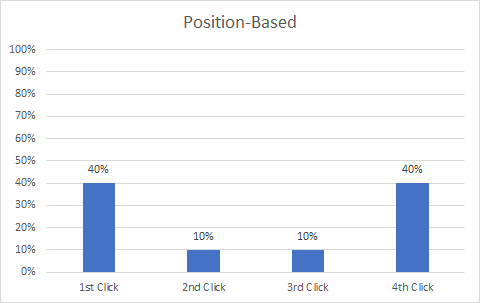
Under the “Linear” attribution model, shown below, all credit is distributed evenly across all clicks in a conversion path, no matter when they occurred. In a scenario where a searcher converts after four ad clicks, each ad would receive one fourth of the credit.
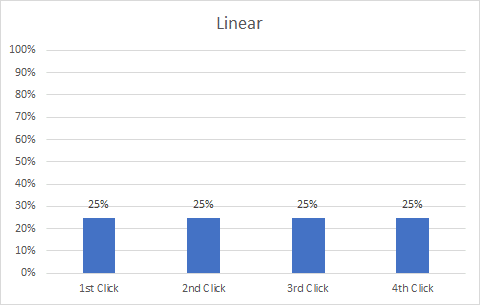
The “Time decay” model, shown below, is a bit more complex than the previous two because it factors in the time it takes for a conversion to complete. Clicks that occur earlier on will receive less credit than the ones that occur closer to the conversion.
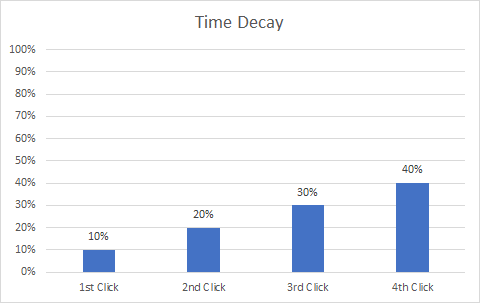
Finally, “Data-driven” attribution — shown below — is the most complex form of attribution. It is only available if your account has generated at least 300 conversions in the last 30 days. The data-driven attribution model leverages the available conversion data to assign fractional importance to the clicks that have the greatest impact on your business goals. The credit given to each click might be different for each conversion that comes through.
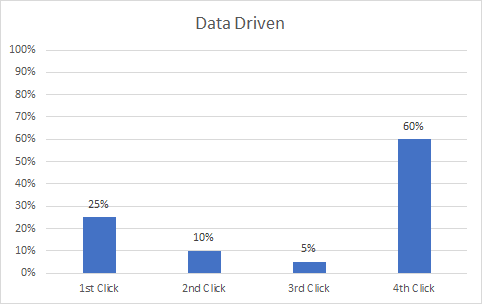
To find your current attribution model settings in Google Ads, navigate to “Tools,” then click on “Conversions,” click into a single “Conversion Action,” and click “Attribution.” Any changes you make will modify your reporting going forward, but will not retroactively affect your historical data. You will need to note the date you changed your attribution model, since it can make your performance look dramatically different in some cases.
Which attribution model is right for your business? There is no single correct answer. In most cases, I recommend switching from the default last-click model and instead using position-based attribution. This will ensure all clicks along the path to a conversion receive credit so that you have a better picture of what is helping you drive conversions.

